Publications
Filter by type:

Zinc mediates control of nitrogen fixation via transcription factor filamentation
Abstract
Plants adapt to fluctuating environmental conditions by adjusting their metabolism and gene expression to maintain fitness1. In legumes, nitrogen homeostasis is maintained by balancing nitrogen acquired from soil resources with nitrogen fixation by symbiotic bacteria in root nodules2-8. Here we show that zinc, an essential plant micronutrient, acts as an intracellular second messenger that connects environmental changes to transcription factor control of metabolic activity in root nodules. We identify a transcriptional regulator, FIXATION UNDER NITRATE (FUN), which acts as a sensor, with zinc controlling the transition between an inactive filamentous megastructure and an active transcriptional regulator. Lower zinc concentrations in the nodule, which we show occur in response to higher levels of soil nitrate, dissociates the filament and activates FUN. FUN then directly targets multiple pathways to initiate breakdown of the nodule. The zinc-dependent filamentation mechanism thus establishes a concentration readout to adapt nodule function to the environmental nitrogen conditions. In a wider perspective, these results have implications for understanding the roles of metal ions in integration of environmental signals with plant development and optimizing delivery of fixed nitrogen in legume crops.

Using an embryo specific promoter to modify iron distribution pattern in Arabidopsis
Abstract
Iron is an essential micronutrient for life. During the development of the seed, iron accumulates during embryo maturation. In Arabidopsis thaliana, iron mainly accumulates in the vacuoles of only one cell type, the cell layer that surrounds provasculature in hypocotyl and cotyledons. Iron accumulation pattern in Arabidopsis is an exception in plant phylogeny, most part of the dicot embryos accumulate iron in several cell layers including cortex and, in some cases, even in protodermis. It remains unknown how does iron reach the internal cell layers of the embryo, and in particular, the molecular mechanisms responsible of this process. Here, we use transgenic approaches to modify the iron accumulation pattern in an Arabidopsis model. Using the SDH2-3 embryo-specific promoter, we were able to express VIT1 ectopically in both a wild type background and a mutant vit1 background lacking expression of this vacuolar iron transporter. These manipulations modify the iron distribution pattern in Arabidopsis from one cell layer to several cell layers, including protodermis, cortex cells, and the endodermis. Interestingly, total seed iron content was not modified compared with the wild type, suggesting that iron distribution in embryos is not involved in the control of the total iron amount accumulated in seeds. This experimental model can be used to study the processes involved in iron distribution patterning during embryo maturation and its evolution in dicot plants.
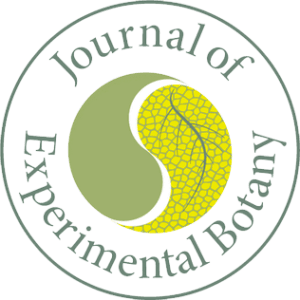
Perspectives on embryo maturation and seed quality in a global climate change scenario
Abstract
Global climate change has already brought noticeable alterations to multiple regions of our planet. Several important steps of plant growth and development, such as embryogenesis, can be affected by environmental changes. For instance, these changes would affect how stored nutrients are used during early stages of seed germination as it transitions from a heterotrophic to autotrophic metabolism, a critical period for the seedling’s survival. In this perspective, we provide a brief description of relevant processes that occur during embryo maturation and account for nutrient accumulation, which are sensitive to environmental change. As examples of the effects associated with climate change are increased CO2 levels and changes in temperature. During seed development, most of the nutrients stored in the seed are accumulated during the seed maturation stage. These nutrients include, depending on the plant species, carbohydrates, lipids and proteins. Regarding micronutrients, it has also been established that iron, a key micronutrient for various electron transfer processes in plant cells, accumulates during embryo maturation. Several articles have been published indicating that climate change can affect the quality of the seed, in terms of total nutritional content, but also, it may affect seed production. Here we discuss the potential effects of temperature and CO2 increase from an embryo autonomous point of view, in an attempt to separate the maternal effects from embryonic effects.

Nodule-specific Cu+-chaperone NCC1 is required for symbiotic nitrogen fixation in Medicago truncatula root nodules
Abstract
Cu+-chaperones are a diverse group of proteins that allocate Cu+ ions to specific copper-proteins, creating different copper pools targeted to specific physiological processes. Symbiotic nitrogen fixation carried out in legume root nodules indirectly requires relatively large amounts of copper e.g. for energy delivery via respiration, for which targeted copper deliver systems would be required. MtNCC1 is a nodule-specific Cu+-chaperone encoded in the Medicago truncatula genome, with a N-terminus Atx1-like domain that can bind Cu+ with picomolar affinities. This gene is expressed primarily from the late infection zone to the early fixation zone, and is located in the cytosol, associated to plasma and symbiosome membranes, and within nuclei. Consistent with its key role in nitrogen fixation, ncc1 mutants have a severe reduction of nitrogenase activity, and a 50% reduction in copper-dependent cytochrome c oxidase activity. A subset of the copper-proteome is also affected in the mutant nodules. Many of these proteins can be pulled-down when using a Cu+-loaded N-terminal MtNCC1 moiety as a bait, indicating a role in nodule copper homeostasis and in copper-dependent physiological processes. Overall, these data suggest a pleiotropic role of MtNCC1 in copper delivery for symbiotic nitrogen fixation.
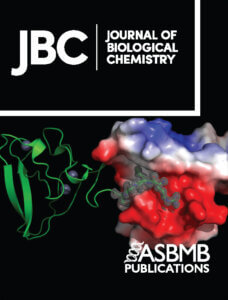
Azotobacter vinelandii scaffold protein NifU transfers iron to NifQ as part of the iron-molybdenum cofactor biosynthesis pathway for nitrogenase
Abstract
The Azotobacter vinelandii molybdenum nitrogenase obtains molybdenum from NifQ, a monomeric iron-sulfur molybdoprotein. This protein requires an existing [Fe-S] cluster to form a [Mo-Fe3-S4] group, which acts as specific molybdenum donor during nitrogenase FeMo-co biosynthesis. Here, we show biochemical evidence supporting the role of NifU as the [Fe-S] cluster donor. Protein-protein interaction studies involving apo-NifQ and as-isolated NifU demonstrated their interaction, which was only effective when NifQ lacked its [Fe-S] cluster. Incubation of apo-NifQ with [Fe4-S4]-loaded NifU increased the iron content of the former, contingent to both proteins being able to interact with one another. As a result of this interaction, a [Fe4-S4] cluster was transferred from NifU to NifQ. In A. vinelandii, NifQ was preferentially metalated by NifU rather than by the [Fe-S] cluster scaffold protein IscU. These results indicate the necessity of co-expressing NifU and NifQ to efficiently provide molybdenum for FeMo-co biosynthesis when engineering nitrogenase in plants.

Iron Homeostasis in Azotobacter vinelandii
Abstract
Iron is an essential nutrient for all life forms. Specialized mechanisms exist in bacteria to ensure iron uptake and its delivery to key enzymes within the cell, while preventing toxicity. Iron uptake and exchange networks must adapt to the different environmental conditions, particularly those that require the biosynthesis of multiple iron proteins, such as nitrogen fixation. In this review, we outline the mechanisms that the model diazotrophic bacterium Azotobacter vinelandii uses to ensure iron nutrition and how it adapts Fe metabolism to diazotrophic growth.
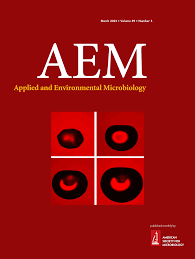
Functional characterization of the Co2+ transporter AitP in Sinorhizobium meliloti: a new player in Fe2+ homeostasis
Abstract
Co2+ induces the increase of the labile-Fe pool (LIP) by Fe-S cluster damage, heme synthesis inhibition and “naked” iron import, which turns cell viability cumbersome. The N2-fixating bacteria Sinorhizobium meliloti is a suitable model to determine the roles of Co2+-transporting Cation diffusion facilitator exporters (Co-eCDF) in Fe2+ homeostasis because it presents a putative member of this sub-familiy, AitP, and two specific Fe2+-export systems. An insertional mutant of AitP showed Co2+ sensitivity and accumulation but not Fe2+ sensitivity, despite AitP being a bona fide low affinity Fe2+ exporter as demonstrated by the kinetic analyses of Fe2+ uptake into everted membrane vesicles. Co2+ sensitivity was increased in double mutants lacking AitP and Fe2+ exporters but this did not correlate with the Co2+ accumulation, suggesting a concomitant Fe2+-dependent induced stress. Growth in presence of sub-lethal Fe2+ and Co2+ concentrations suggested that naked Fe-import might contribute to Co2+ toxicity. Supporting this Co2+ induced transcription of Fe-import system and genes associated to Fe homeostasis. Analyses of total protoporphyrin content point to Fe-S cluster attack as the major source for LIP. AitP mediated Fe2+-export is likely countered via a non-futile Fe2+-import pathway. Two lines of evidence support this: i) an increased hemin uptake in presence of Co2+ was observed in WT vs. AitP mutant and ii) hemin reversed the Co2+ sensitivity in the last. Thus simultaneous detoxification mediated by AitP, aid cells to orchestrate an Fe-S cluster salvage response avoiding the increase in the LIP caused by disassembly of Fe-S clusters or naked iron uptake.
Importance A cross-talk between iron and cobalt has been long recognized in biological systems. This is due to the capacity of cobalt to interfere with proper iron utilization. Cells can detoxify cobalt by exporting mechanisms involving membrane proteins known as exporters. Highlighting the cross-talk, the capacity of several cobalt exporters to also export iron is emerging. Although biologically less important than Fe2+, Co2+ induces toxicity by promoting intracellular Fe release, which ultimately causes additional toxic effects. In this work we described how the N2-fixating rhizobial cells solve this perturbation by clearing Fe through a Co2+-exporter in order to reestablish intracellular Fe-levels by importing non-naked Fe, heme. This piggy back ride type of transport might aid bacterial cells to survive in free-living conditions were high anthropogenic Co2+ content could be encountered.

Forging a symbiosis: Transition metal delivery in symbiotic nitrogen fixation
Summary
Symbiotic nitrogen fixation carried out by the interaction between legumes and rhizobia is the main source of nitrogen in natural ecosystems and in sustainable agriculture. For the symbiosis to be viable, nutrient exchange between the partners is essential. Transition metals are among the nutrients delivered to the nitrogen-fixing bacteria within the legume root nodule cells. These elements are used as cofactors for many of the enzymes controlling nodule development and function, including nitrogenase, the only known enzyme able to convert N2 into NH3. In this review,we discuss the current knowledge onhow iron, zinc, copper, and molybdenum reach the nodules, how they are delivered to nodule cells, and how they are transferred to nitrogen-fixing bacteria within.

Micronutrient homeostasis in plants for more sustainable agriculture and healthier human nutrition
Abstract
To provide sustainable, sufficient, and nutritious food to a growing population is a major challenge for agriculture and the plant research community. In this respect the mineral micronutrient content of food crops deserves particular attention. Micronutrient deficiencies in cultivated soils and plants are a global problem which adversely affects crop production, plant nutritional value as well as human health and well-being. In this review, we call for awareness on the importance and relevance of micronutrients in crop production and quality. We stress the need for better nutrition in human populations with micronutrients, not only in developing but also in developed nations, and describe strategies to identify and characterize new varieties with high micronutrient content. Furthermore, we explain how an adequate nutrition of plants with micronutrients impacts metabolic functions and the capacity of plants to express tolerance mechanisms against abiotic and biotic constraints. Finally, a brief overview and a critical discussion on the current knowledge, future challenges and specific technological needs for the research on plant micronutrient homeostasis are provided. Research in this area is expected to foster the sustainable development of nutritious and healthy food crops for human consumption.
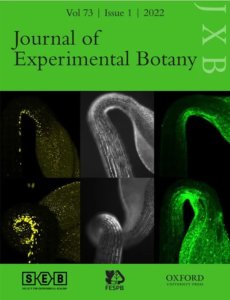
Arabidopsis thaliana Zn2+-efflux ATPases HMA2 and HMA4 are required for resistance to the necrotrophic fungus Plectosphaerella cucumerina BMM
Abstract
Zinc is an essential nutrient at low concentrations, but toxic at slightly higher ones. It has been proposed that hyperaccumulator plants may use the excess zinc to fend off pathogens and herbivores. However, there is little evidence of a similar response in other plants. Here we show that Arabidopsis thaliana leaves inoculated with the necrotrophic fungus Plectosphaerella cucumerina BMM (PcBMM) accumulate zinc and manganese at the infection site. Zinc accumulation did not occur in a double mutant in the zinc transporters HEAVY METAL ATPASE2 and HEAVY METAL ATPASE4 (HMA2 and HMA4), which has reduced zinc translocation from roots to shoots. Consistent with a role in plant immunity, expression of HMA2 and HMA4 was up-regulated upon PcBMM inoculation, and hma2hma4 mutants were more susceptible to PcBMM infection. This phenotype was rescued upon zinc supplementation. The increased susceptibility to PcBMM infection was not due to the diminished expression of genes involved in the salicylic acid, ethylene, or jasmonate pathways since they were constitutively up-regulated in hma2hma4 plants. Our data indicate a role of zinc in resistance to PcBMM in plants containing ordinary levels of zinc. This layer of immunity runs in parallel to the already characterized defence pathways, and its removal has a direct effect on resistance to pathogens.
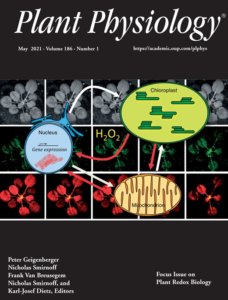
Soybean Yellow Stripe-like7 is a symbiosome membrane peptide transporter important for nitrogen fixation
Abstract
Legumes form a symbiosis with rhizobia that convert atmospheric nitrogen (N2) to ammonia and provide it to the plant in return for a carbon and nutrient supply. Nodules, developed as part of the symbiosis, harbor rhizobia that are enclosed in a plant-derived symbiosome membrane (SM) to form an organelle-like structure called the symbiosome. In mature nodules exchanges between the symbionts occur across the SM. Here we characterize Yellow Stripe-like 7 (GmYSL7), a Yellow stripe-like family member localized on the SM in soybean (Glycine max) nodules. It is expressed specifically in infected cells with expression peaking soon after nitrogenase becomes active. Unlike most YSL family members, GmYSL7 does not transport metals complexed with phytosiderophores. Rather, it transports oligopeptides of between four and 12 amino acids. Silencing GmYSL7 reduces nitrogenase activity and blocks infected cell development so that symbiosomes contain only a single bacteroid. This indicates the substrate of YSL7 is required for proper nodule development, either by promoting symbiosome development directly or by preventing inhibition of development by the plant. RNAseq of nodules where GmYSL7 was silenced suggests that the plant initiates a defense response against rhizobia with genes encoding proteins involved in amino acid export downregulated and some transcripts associated with metal homeostasis altered. These changes may result from the decrease in nitrogen fixation upon GmYSL7 silencing and suggest that the peptide(s) transported by GmYSL7 monitor the functional state of the bacteroids and regulate nodule metabolism and transport processes accordingly. Further work to identify the physiological substrate for GmYSL7 will allow clarification of this role.
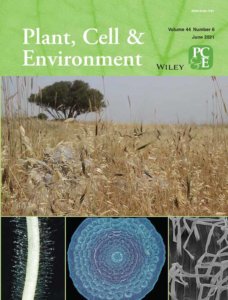
Medicago truncatula Yellow Stripe-Like7 encodes a peptide transporter participating in symbiotic nitrogen fixation
Abstract
Yellow Stripe-Like (YSL) proteins are a family of plant transporters that are typically involved in transition metal homeostasis. Three of the four YSL clades (I, II, and IV) transport metals complexed with the non-proteinogenic amino acid nicotianamine or its derivatives. No such capability has been shown for any member of clade III but the link between these YSLs and metal homeostasis could be masked by functional redundancy. We studied the role of the clade III YSL protein MtSYL7 in Medicago truncatula nodules. MtYSL7, which encodes a plasma membrane-bound protein, is mainly expressed the pericycle and cortex cells of the root nodules. Yeast complementation assays revealed that MtSYL7 is able to transport short peptides. Medicago truncatula transposon insertion mutants with decreased expression of MtYSL7 had lower nitrogen fixation rates and showed reduced plant growth whether grown in symbiosis with rhizobia or not. YSL7 mutants accumulated more copper and iron in the nodules, which is likely to result from the increased expression of iron uptake and delivery genes in roots. Taken together, these data suggest that MtYSL7 plays an important role in the transition metal homeostasis of nodules and in symbiotic nitrogen fixation.
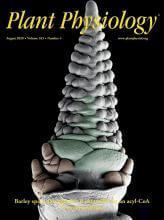
Robust survival-based RNAi of gene families using in tandem silencing of adenine phosphoribosyltransferase
Abstract
RNA interference (RNAi) enables flexible and dynamic interrogation of entire gene families or essential genes without the need for exogenous proteins, unlike CRISPR-Cas technology. Unfortunately, isolation of plants undergoing potent gene silencing requires laborious design, visual screening, and physical separation for downstream characterization. Here, we developed an adenine phosphoribosyltransferase (APT)-based RNA interference (RNAi) technology (APTi) in Physcomitrella patens that improves upon the multiple limitations of current RNAi techniques. APTi exploits the pro-survival output of transiently silencing APT in the presence of 2-fluoradenine, thereby establishing survival itself as a reporter of RNAi. To maximize the silencing efficacy of gene targets, we created vectors that facilitate insertion of any gene target sequence in tandem with the APT silencing motif. We tested the efficacy of APTi with two gene families, the actin-dependent motor, myosin XI (a,b), and the putative chitin receptor Lyk5 (a,b,c). The APTi approach resulted in a homogenous population of transient P. patens mutants specific for our gene targets with zero surviving background plants within 8 days. The observed mutants directly corresponded to a maximal 93% reduction of myosin XI protein and complete loss of chitin-induced calcium spiking in the Lyk5-RNAi background. The positive selection nature of APTi represents a fundamental improvement in RNAi technology and will contribute to the growing demand for technologies amenable to high-throughput phenotyping.
Nicotianamine Synthase 2 Is Required for Symbiotic Nitrogen Fixation in Medicago truncatula Nodules
Abstract
Symbiotic nitrogen fixation carried out by the interaction between legumes and diazotrophic bacteria known as rhizobia requires of relatively large levels of transition metals. These elements act as cofactors of many key enzymes involved in this process. Metallic micronutrients are obtained from soil by the roots and directed to sink organs by the vasculature, in a process participated by a number of metal transporters and small organic molecules that mediate metal delivery in the plant fluids. Among the later, nicotianamine is one of the most important. Synthesized by nicotianamine synthases (NAS), this non-proteinogenic amino acid forms metal complexes participating in intracellular metal homeostasis and long-distance metal trafficking. Here we characterized the NAS2 gene from model legume Medicago truncatula. MtNAS2 is located in the root vasculature and in all nodule tissues in the infection and fixation zones. Symbiotic nitrogen fixation requires of MtNAS2 function, as indicated by the loss of nitrogenase activity in the insertional mutant nas2-1, a phenotype reverted by reintroduction of a wild-type copy of MtNAS2. This would be the result of the altered iron distribution in nas2-1 nodules, as indicated by X-ray fluorescence studies. Moreover, iron speciation is also affected in these nodules. These data suggest a role of nicotianamine in iron delivery for symbiotic nitrogen fixation.

MtCOPT2 is a Cu+ transporter specifically expressed in Medicago truncatula mycorrhizal roots
Abstract
Arbuscular mycorrhizal fungi are critical participants in plant nutrition in natural ecosystems and in sustainable agriculture. A large proportion of the phosphorus, nitrogen, sulfur, and transition metal elements that the host plant requires are obtained from the soil by the fungal mycelium and released at the arbuscules in exchange for photosynthates. While many of the plant transporters responsible for obtaining macronutrients at the periarbuscular space have been characterized, the identities of those mediating transition metal uptake remain unknown. In this work, MtCOPT2 has been identified as the only member of the copper transporter family COPT in the model legume Medicago truncatula to be specifically expressed in mycorrhizal roots. Fusing a C-terminal GFP tag to MtCOPT2 expressed under its own promoter showed a distribution pattern that corresponds with arbuscule distribution in the roots. When expressed in tobacco leaves, MtCOPT2-GFP co-localizes with a plasma membrane marker. MtCOPT2 is intimately related to the rhizobial nodule-specific MtCOPT1, which is suggestive of a shared evolutionary lineage that links transition metal nutrition in the two main root endosymbioses in legumes.
